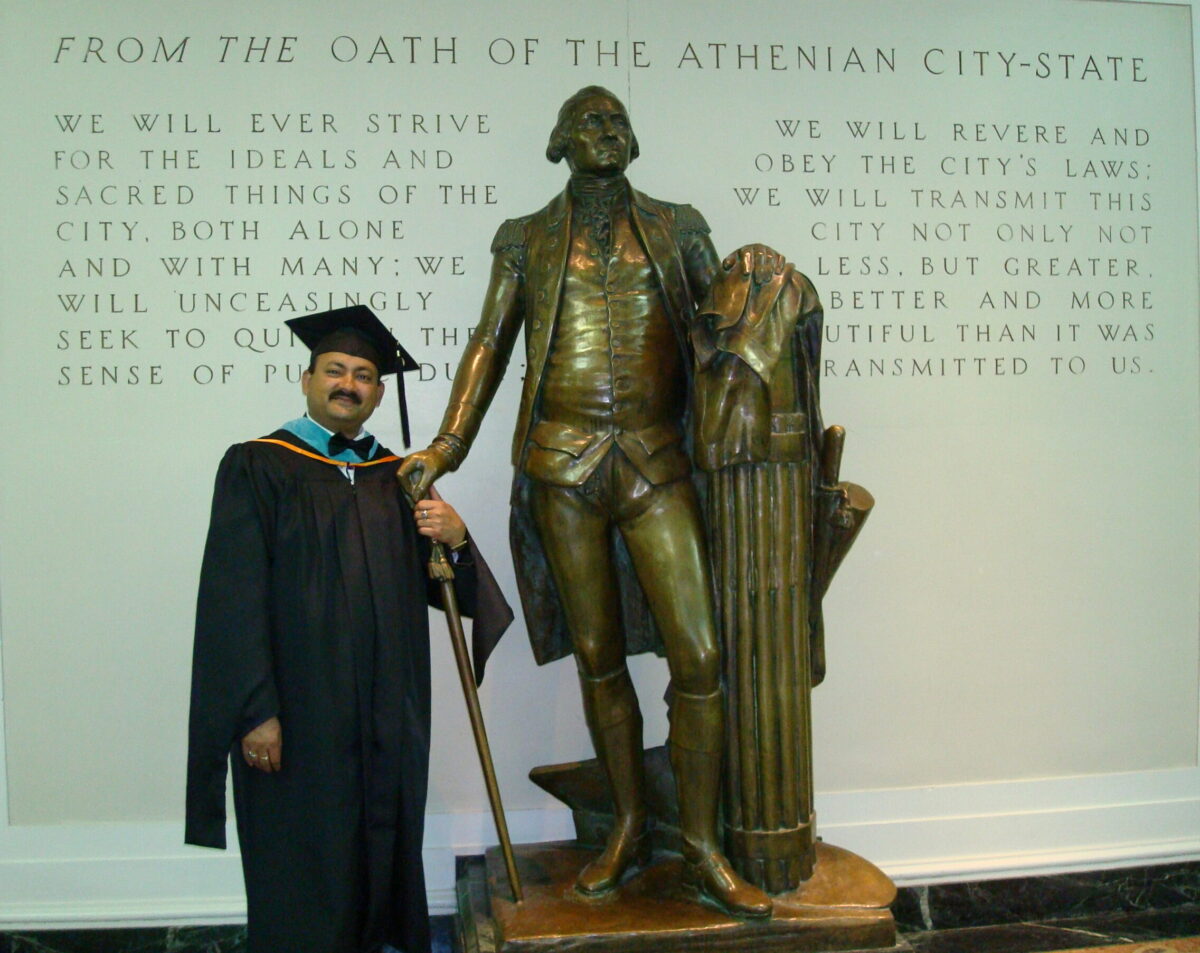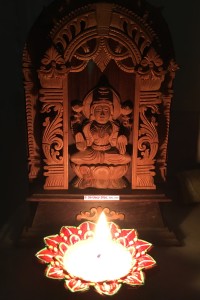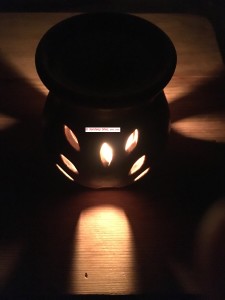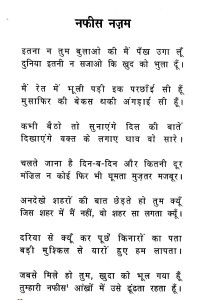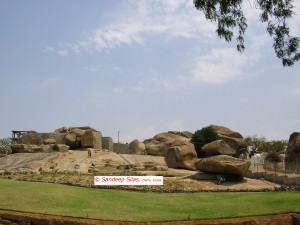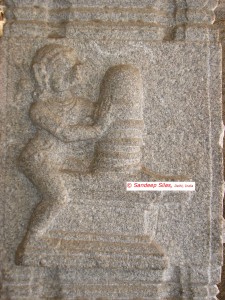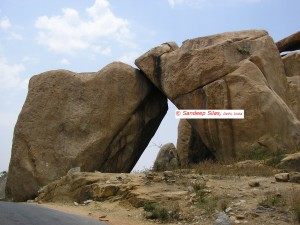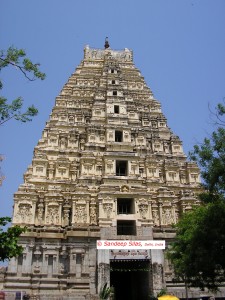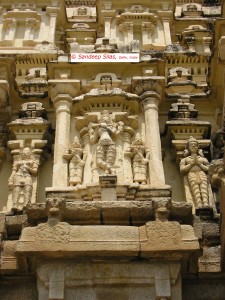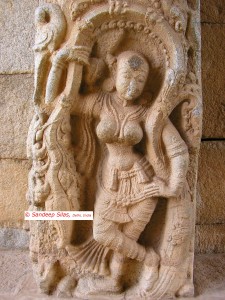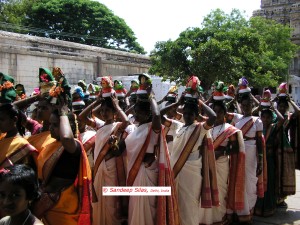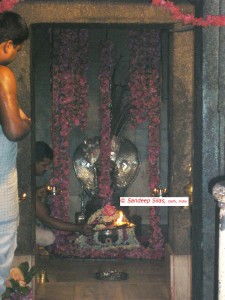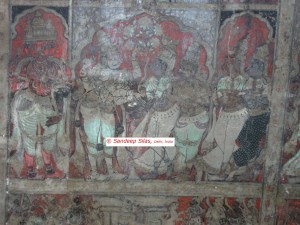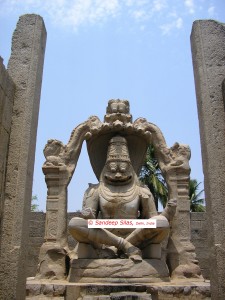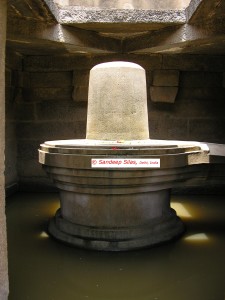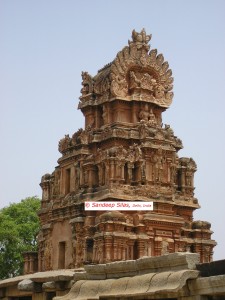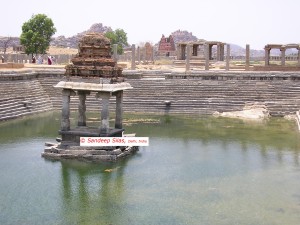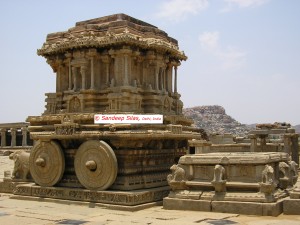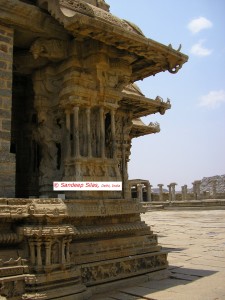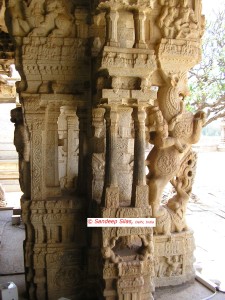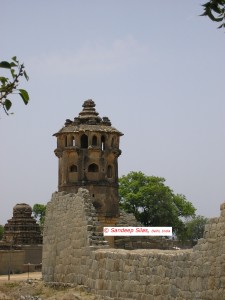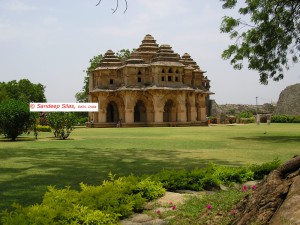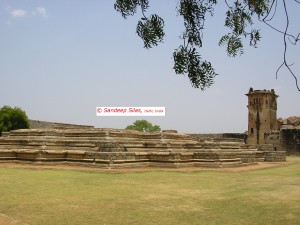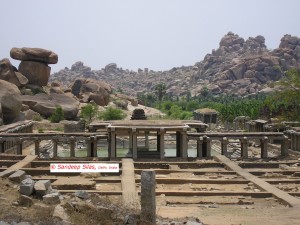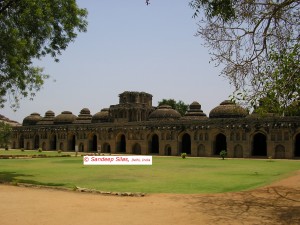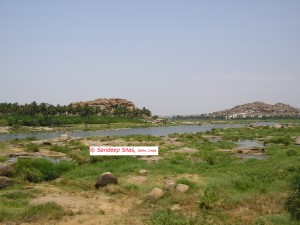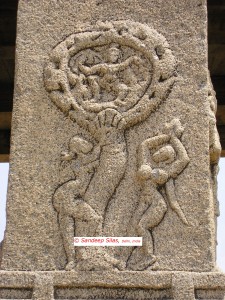(The Pioneer Feb 24, 2001)
By myself in Bali by Sandeep Silas, published in The Hindu
Sandeep Silas visits the Indonesian island and comes back with memories of tourist beaches, the music of the angklun and glimpses of India everywhere
How do you see a country of 17,000 islands? That when 6,000 of which are inhabited! So you go to the place you’ve heard most about and which promises a generous share of the sun and beach.
The word ‘Indonesia’ has an India connection — “Indos” means Indian and “nesos” means islands.
India here is every where and in everything — statues from the Ramayana at road intersections; people greeting you with “Namaste”, temples, folk performances of the Ramayana, wood craft, the confusion of shops coming right up the street, and the unevenness of order. The reason was not far to find.
Indian traders brought Indian culture and religion here in 1st Century A.D. In 7th Century A. D. the Buddhist kingdom of Srivijaya in South Sumatra was epitomised in the building of the Borobudur Buddhist sanctuary. In 13th Century A.D. East Java saw the emergence of the Hindu empire of Majapahit, which lasted two centuries, uniting Indonesia and parts of the Malay peninsula. The Indian Government is helping restore the Prambanan Temple near Yogyakarta. Islam came in the 16th Century, again with traders, and today is the dominant religion here. Interestingly, Marco Polo came to Java in 1292 A.D. but the Europeans did not come until the 16th Century, when the fragrance and flavour of spices could not hold them back anymore. The Portuguese, Dutch, Spanish, British, Japanese… all have been players in the archipelago till Soekarno proclaimed independence in 1945 A.D.
The road took me to Nusa Dua. Once inside the Italy-like tip of the Indonesian shoe, I learnt it is an insulated area for tourists, with little or no interaction with Indonesian people save what is dished out by the hotels. Past the Namastes, floral greetings and bamboo music it was left entirely to me to discover the Balinese way of life.
 Nusa Dua Beach in Bali. Photo: Sandeep Silas
Nusa Dua Beach in Bali. Photo: Sandeep Silas
A break took me to Kuta Beach, which, along with Jembaran, is a favourite with tourists. Crowded, confused and scarred by the memory of the 2005 bomb blasts, the place still buzzes like a bee.
A while later I saw the most stunning examples of woodcraft. Most of them celebrate Jatayu’s sacrifice as it tried to protect Sita from being captured by Ravan. Ram and Sita, too, were captured in wood.
I selected a depiction of an Indonesian couple in the rice fields as a souvenir, having enough of the Ramayana in my home country. The batik here is irresistible, so be prepared to be divested of a few thousands of rupiahs if you enter a showroom. One thing I must record is the simplicity of the ordinary Indonesian. They appear so human and appear so starry-eyed as they feel that your situation in life is better. The very mention of ‘India’ generated a friendliness.
The beach was calm. Sea-washed! I sighted fresh algae that the waves had brought to the shore.
Click, click, click went the shutter, capturing the golden road to the sun on the water surface. It lasted about ten minutes, this heavenly bliss before normalcy returned and it was like any other day. The virgin rays falling on the beach, the trees, the beachside temple and on my face were all in my camera.
Next day was a day full of diplomatic nuances, debates and a draft declaration. The evening promised Ubud — rice fields and ethnic dance. I travelled almost an hour from Nusa Dua and reached a restaurant complex called Laka Leke, situated amidst the rice fields. Everybody sits here in spacious pavilions and witnesses the Kecak and fire dance. The venue is illuminated by flickering oil lamps. When the queen enters on her palanquin, bare-chested men raise their hands and bow their heads in welcome. Kecak is actually the Balinese version of the episode of Sita’s captivity. The men play the monkeys, crying ‘cak-cak-cak’ and circling Sita as they dance, the fire adding an element of mystery to the scene. Hanuman, the monkey god, comes to rescue Sita, gives her the ring of her husband Ram and consoles her. Now, the only difference in the Balinese Ramayana and that which we know in India is that there the story ends with “lived happily ever after”, while in the Indian version she had to go through the ritual of Agni Pariksha (fire ordeal).
 Nurturing culture: Ramlila in Bali. Photo: Sandeep Silas
Nurturing culture: Ramlila in Bali. Photo: Sandeep Silas
The Taman Ayun Jagatnatha, is dedicated to god Sang Hyang Vidi Wasa. The capital Denpasar has many community temples. There’s Pura temple in Mengwi sits on a tableland. All temples have a turtle and two dragons in stone signifying the foundation of the world.
The Balinese dress and dance during festivals — Galungan and Nyepi are the main ones. The harvest thanksgiving festival is Makepung and held from August 8 to 12 at Jembaran. The islands’ most famous sea temple is Tanah Lot, where rituals were conducted and offerings given to the guardian spirits of the sea.
The simplicity of Bali’s music appealed to me a lot. There is the angklun, an instrument made of slit bamboo, which is held in hand and shaken to release the musical notes.
I carried an angklun back home, and whenever I think of Bali I just go and give it a little shake.
Keywords: Indonesian island, Bali
(Published in The Hindu, May 27, 2012)
Note: 8 photographs added at the time of uploading.
Link: http://www.thehindu.com/features/metroplus/travel/by-myself-in-bali/article3462543.ece
HAPPY DIWALI
#The #Roman #Connection by #Sandeep #Silas
Nafees Nazm by Sandeep Silas ‘deep’ in Ranai-e-Khayal
Nafees Nazm (Pure Verse)
Don’t call out to me so much that I wear wings to fly
Don’t adorn your world so much that I loose myself
I am a mere shadow lying forgotten in the sand
Like the pandiculation of a tired traveller am I
Sit down beside me to hear once all that is in my heart
Will reveal all those wounds inflicted by Time upon me
How much have I to walk every day and how much far
I roam restless knowing not what is to be my destination
Why do you talk to me of cities unseen ?
When I am not in there, why does it seem a city to you?
Why do you ask the sea, the address of the shores?
With a lot of effort my friends I have lost myself
Since the time you met me, I have forgotten God
I keep on searching for Him now in your pure eyes
…
Nafees Nazm by Sandeep Silas ‘deep’ in Ranai-e-Khayal, 2012
Translated Book in English available on Amazon Kindle:
https://www.amazon.in/BEAUTIFUL-THOUGHTS-Sandeep-Silas-ebook/dp/B0080RNI7C
![BEAUTIFUL THOUGHTS by [Silas, Sandeep]](https://images-eu.ssl-images-amazon.com/images/I/51T%2BzYeK4uL.jpg)
For original Hindi version Ranai-e-Khayal please contact me.
Daur by Sandeep Silas ‘deep’
Daur (TIme)
How strangely the madness of passion rises to a man’s head?
He reaches or not his destination, life gets consumed by the pursuit
This state of being crazy in love is also so strange
There might not be any truth, still it feels so sweet
One whole night has gone by, without looking at the stars
In the orbs of your beauteous face, I found my shining stars
This must be the Day of Judgement, known to humanity for ages
See, how the Moon is illumined today by ‘deep’ without any reason
…
Daur by Sandeep Silas ‘deep’ in Ranai-e-Khayal, 2012
Translated Book in English available on Amazon Kindle:
https://www.amazon.in/BEAUTIFUL-THOUGHTS-Sandeep-Silas-ebook/dp/B0080RNI7C
![BEAUTIFUL THOUGHTS by [Silas, Sandeep]](https://images-eu.ssl-images-amazon.com/images/I/51T%2BzYeK4uL.jpg)
For original Hindi version Ranai-e-Khayal please contact me.
#Funny #Plastic #Money by #Sandeep #Silas in The #Pioneer
#HAMPI: #City of #Dreams by #Sandeep #Silas
There are some people in the world who dream and forget; there are those who dream and dare.
Hampi, the last capital of the great Vijayanagar kingdom was one such dream. In this dream of the King, there was nothing missing—palaces, temples, baths, water tanks, market, platform to watch festivities, watch towers, elephant stables, long covered corridors, aqueducts and fortifications. And this was not bare. Each pillar of a palace or a temple’s gopuram and vimana, doorway, passage, was affectionately adorned with statues of gods, goddesses, humans and animals. The roof was a story in itself—on it was painted a legend or a complete scene. A 15th century muslim envoy, Abdul Razaq, was forced by the beauty of Hampi to remark—“The city is such that the pupil of the eye has never seen a place like it, and the ear of intelligence has never been informed that there existed anything to equal it in the world”. The historians, Nuniz and Paes, praised the city as being greater than Rome, its palaces plated with jewel encrusted gold, simply ‘the best provided city in the world.’
First, to the name Hampi. It is said that Goddess Hampi (Parvati) attained Lord Shiva on the banks of the River Tungabhadra that flows through Hampi.
On her name lives the city and now the World Heritage Site. There is a Ramayana connection also with Hampi. It was originally known as Kishkindha, the monkey kingdom of the great monkey faced King Sugriva, who assisted Lord Rama in the fight against demon King Ravana of Lanka. Later, two brothers, Hakka and Bukka raised Hampi to a city in AD 1336. In the centuries that followed Vijayangar Kingdom surpassed all others in wealth, fame and status between the 14th and 16th centuries.
When I first arrived in the vicinity of Hampi, I was struck by the sheer beauty of the landscape strewn with boulders. Amazing shapes and designs peeped out of most naturally placed boulders.
How an earth could a heavy boulder be resting for ages on a smaller one? How could the wind and rain have shaped another like a pillar? How could two huge rocks be so moved to rest in a standing position converged at the top? There was despair and hope, both written across the landscape by the boulders.
The approach to the main living shrine, the Virupaksha Temple is across a hill. Dropped in the midst of the market place, the erstwhile Hampi Bazaar, I was moved to view with awe the sheer magnificence of the temple gopuram. In those days the gopurams used to tower above the earth.
Built in pyramidal style, profusely ornamented by statues of gods, goddesses and attendant females, this one makes you feel so alive.
Statues of voluptuous females with slender waists, adorned with ornaments, fill up corners of the rising structure. They reveal the concept of beauty and the popular style of jewellery worn in the period. Should your look be a lingering one, there is a possibility that life may fill up the statue and she may come towards you!
A group of women, walking in a row of three, dressed up in the colours of the Indian flag, marched decisively towards the shrine for worship. On their heads was carried puja material and an offering of coconut. They had a band of dancers and drummers following as accompanists. The whole atmosphere was charged.
The presiding deity inside the shrine is Shiva, represented by the lingam. Sprinkled flowers, coconut water, ritual of aarti performed by a flame of fire and the smell of incense completed the picture of worship in an Indian temple. Heads bowed, prayers were offered and the devotees trooped out on the other side.
I stopped to look at the frescoes on the ceiling. The colours have faded but the scene of Shiva’s marriage with Parvati is still visible in its completeness. The celebration is painted in natural colours and comes out with a vibrance that is visible unmistakably in the poise and the eyes of the godly couple.
Out of the temple, I climbed up the bend and halted at the monolith Ganesha. He sits inside the room in his glory while in the pillared hall outside dance maidens on the many pillars, their movement frozen in stone. I move further to a large green arena at one end of which is another Ganesha, much smaller, but sitting in the same style, gazing at the pillared hall in front. A nondescript road takes me further to the Ugra Narsimha.
Again a monolith statue, it now stands alone, as the structure above it was perhaps victim of pillage and destruction at the hands of invaders. The 6-7 meter tall Lakshmi Narasimha has an angered look on his face as he determinedly sits cross-legged. Just next to it is a small round tank, roof open, in the midst of which is a huge rock lingam, the Badavilinga. The water was still and sunlight opened a window on the water surface, half bathing the lingam with light.
I resumed my exploration as I entered the Hazara Rama Temple. The gopuram here is much smaller in dimension and rather full of signs of decay. Two amazing statues of women in dance poise, I caught on the sides as I entered the gate.
Just outside on the other side of the road is a water tank with steps leading down to the water. A covered corridor resting on pillars runs around reminiscent of the style of the Great Roman Baths.
More surprise followed later as I stood face to face with the first stone chariot I had ever seen in the Vithala Temple precincts.
Drawn by miniature elephants it is elaborately carved and has stone wheels that actually move. A ladder is placed in front to enter the chariot.
The biggest wonder is caged in the 56 elaborately carved hollow pillars of this temple. These emit different musical notes! Ever heard of musical notes emanating from stone pillars?
I tapped on one, then another, yet another dazed in ear and eye. How could music be caged in stone? What combination of arithmetic and art was employed to make them sound different and yet combine like in an orchestra? It is sound engineering of the highest order! It is a musical offering of stone to the gods! What better way to please the gods in heavens above! India in any case worships 33 crore deities so the music from these stone pillars will have to emanate equal numbers of days even if it is for one god each day!
The master craftsmen of Hampi, the master musician, and of course the vision of the King as the one who conceptualized the entire setting deserve kudos. I must mention the name of the great King Krishnadevaraya to whom Hampi owes much of its magnificent buildings.
A signage calling aloud ‘Lotus Mahal’ moved our steps. There was an outer wall blocking the view of the interior buildings. This indicated that it was the preserve of the Queen and other ladies.
Inside was a water tank to the right now overgrown with weed and wedded to neglect. To the left a platform is reminder of the royal ladies watching the Mahanavmi celebrations from its vantage position. On both sides of the enclosure are watch-towers, placed diagonally, from where eunuchs guarded the ladies of the Mahal.
In the center of the garden is an exquisite palace, called Lotus Mahal, residence of the Chief Queen.
Two storeyed, carved archways running through, ornamented on the exterior like the dress of a bride, the Mahal has a certain delicacy about it that pleases. It is said that this building was inspired by the beauty of a woman!
A strong desire to see the magic of Hampi come alive, filled up my mind. In my imagination water started filling up the tank, the rustle of silk in Lotus Mahal and oh, those dainty whispers, started wafting out. Soon the caparisoned elephants started lining up outside and eunuchs busied themselves. Dusk was approaching and earthen lamps were lighted all around, their flame protected by the niches that housed them in the walls.
There is no light more romantic than that of diya! When hundreds of them spring to life all about you there is no escaping their warmth. The Mahanavami Dibba became a focal point as royal ladies assembled there to watch fireworks in the city. The sky was soon ablaze with colours and so were the hearts of those who secretly desired someone.
The ruins of Hampi possess a power to captivate the mind’s eye and enthrall a visitor by the warmth of their images that are captive of the times that have gone by.
I walked out on the other side of the ladies enclosure and came to two huge buildings, one used then for the elephants as a stable, and one for their masters.
Further beyond are three small buildings, one of which my guide tells me was the massage and beauty treatment house for the royal ladies!
You hear more stories as you explore more. The King’s Balance is a place where the King was weighed in grain or gold that went for distribution to the poor. The Queen’s Bath is a lovely tank surrounded by arched corridors and lotus shaped fountains under which frolicked the royal ladies.
More excavations are revealing more facets of city life. The Muslim Sultans of the Deccan combined in war frenzy in 1565 AD and attacked this Hindu Kingdom. What followed was destruction, plunder and loot. Somebody won, somebody lost and Hampi was finished forever.
The river Tungabhadra crosses the Hampi valley meandering over rocks and becoming the silver line of this cloud. The river banks at Anegundi village are haven for tourists who wish to stay more at Hampi seeping slowly the beauty of the plundered city. The fortress town of Anegundi is trying to bravely revive the traditional arts of Hampi and the effort is laudable.
Yet in its ruins, those survived, there is a truth written all over; the truth of human endeavor, the truth of human beauty and excellence.
What Time then buried, Time is now revealing in faint blips of ecstasy and wonder!
Lakhtey Jigar by Sandeep Silas ‘deep’ in Ranai-e-Khayal
DARLING
Turn around and call out to me sometime
Don’t you ignore me darling another time
Why do you watch the lustre of the setting Sun?
Come sometime to me, and face the rising one
Don’t take the paths those take you far from me
Run sometimes to me and embrace me of your own
Lakhtey Jigar by Sandeep Silas ‘deep’ in Ranai-e-Khayal, 2012
Translated Book in English available on Amazon Kindle:
https://www.amazon.in/BEAUTIFUL-THOUGHTS-Sandeep-Silas-ebook/dp/B0080RNI7C
![BEAUTIFUL THOUGHTS by [Silas, Sandeep]](https://images-eu.ssl-images-amazon.com/images/I/51T%2BzYeK4uL.jpg)
For original Hindi version Ranai-e-Khayal please contact me.
